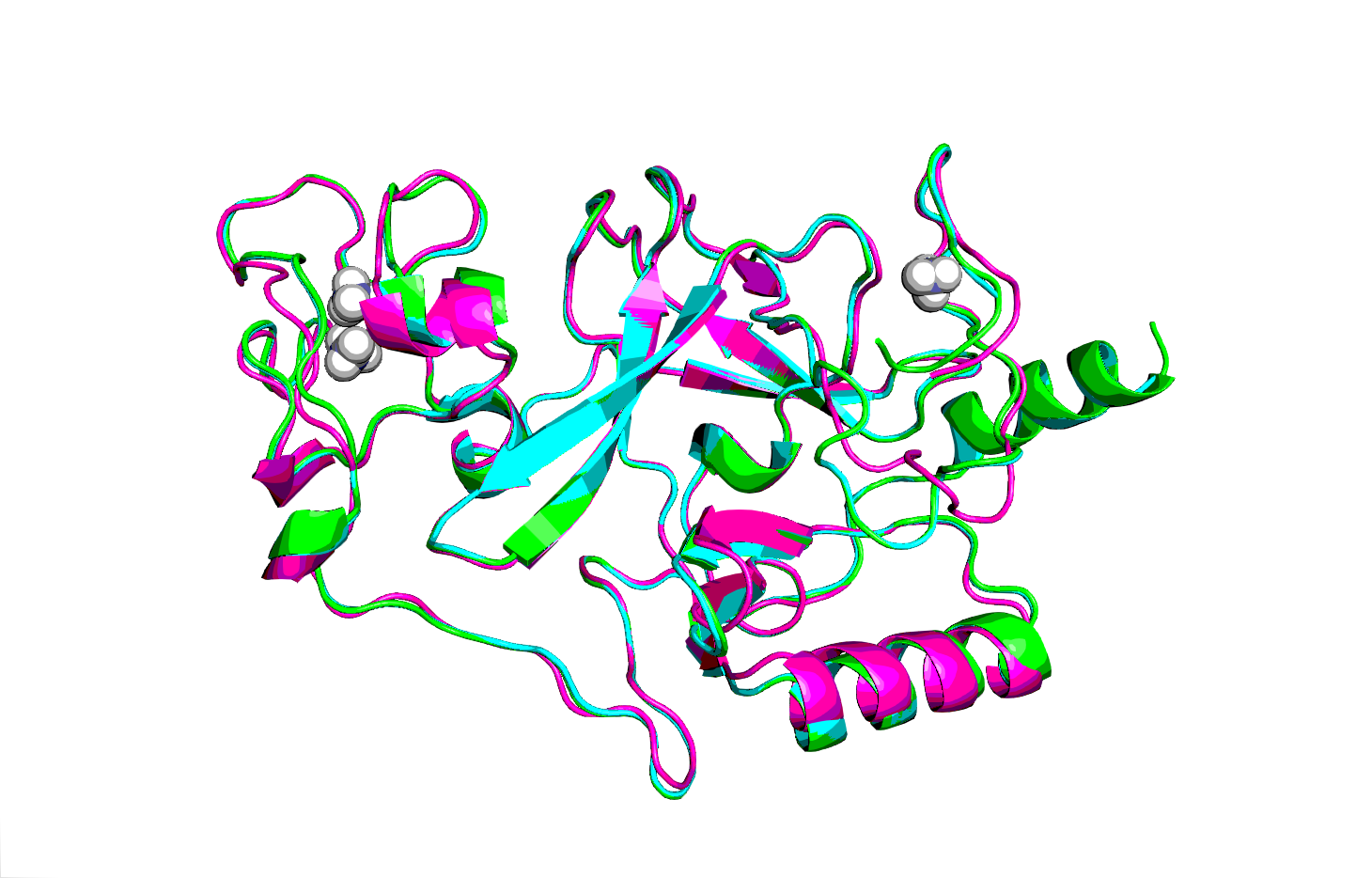The Chodera Lab at the Memorial Sloan Kettering Cancer Center is now running a series of projects to study the conformational dynamics of histone methyltransferases to aid in the rational design of new small molecule therapeutics and chemical probes. This important class of proteins plays the role of epigenetic ‘writers’, methylating the histone proteins around which nuclear DNA is wrapped, which acts as a kind of on/off switch for the expression or regulation of particular genes. Dysregulation of this finely-tuned system has been implicated in the initiation and maintenance of a number of cancers, and therapeutic strategies that involve selectively targeting specific histone methyltransferases with small molecules have shown promising results.
In Projects 11703, 11704, and 11706, we are particularly interested in the NSD family of proteins: NSD1, NSD2, and NSD3. An increasing number of studies have implicated the NSD methyltransferases in cancer development, proposing them as potential new targets in cancer therapy. NSD1 is involved in childhood acute myeloid leukemia, multiple myelomas, lung cancer, neuroblastomas and glioblastomas. Disruption of this gene can also cause Sotos syndrome, which is characterized by learning disabilities and has been described in a number of patients with autism spectrum disorder. NSD2 has been most strongly linked to prostate cancer and multiple myeloma, but is found overexpressed in 15 various cancers and is associated with tumor aggressiveness, and poor prognosis in most types of cancers. Both NSD1 and NSD2 can trigger oncogenic cellular transformation, leading to the formation of cancer. NSD3 is involved in breast and lung cancers, as well as acute myeloid leukemia.
While the design of new small molecules that specifically target NSD1, NSD2, or NSD3 is an attractive route to both developing new cancer treatments and learning more about how these proteins regulate their epigenetic targets, the high structural flexibility of two regions in the NSD proteins make this a challenging drug target unless this flexibility is accounted for in the small molecule design process. In Projects 11703, 11704 and 11706 we aim to understand the nature of this flexibility in terms of what conformations these NSD proteins can adopt (by studying their conformational dynamics) in much more detail than is currently known, and will subsequently explore how these changes can be utilized for better, cheaper, and faster design of small molecules that bind selectively to these targets.

